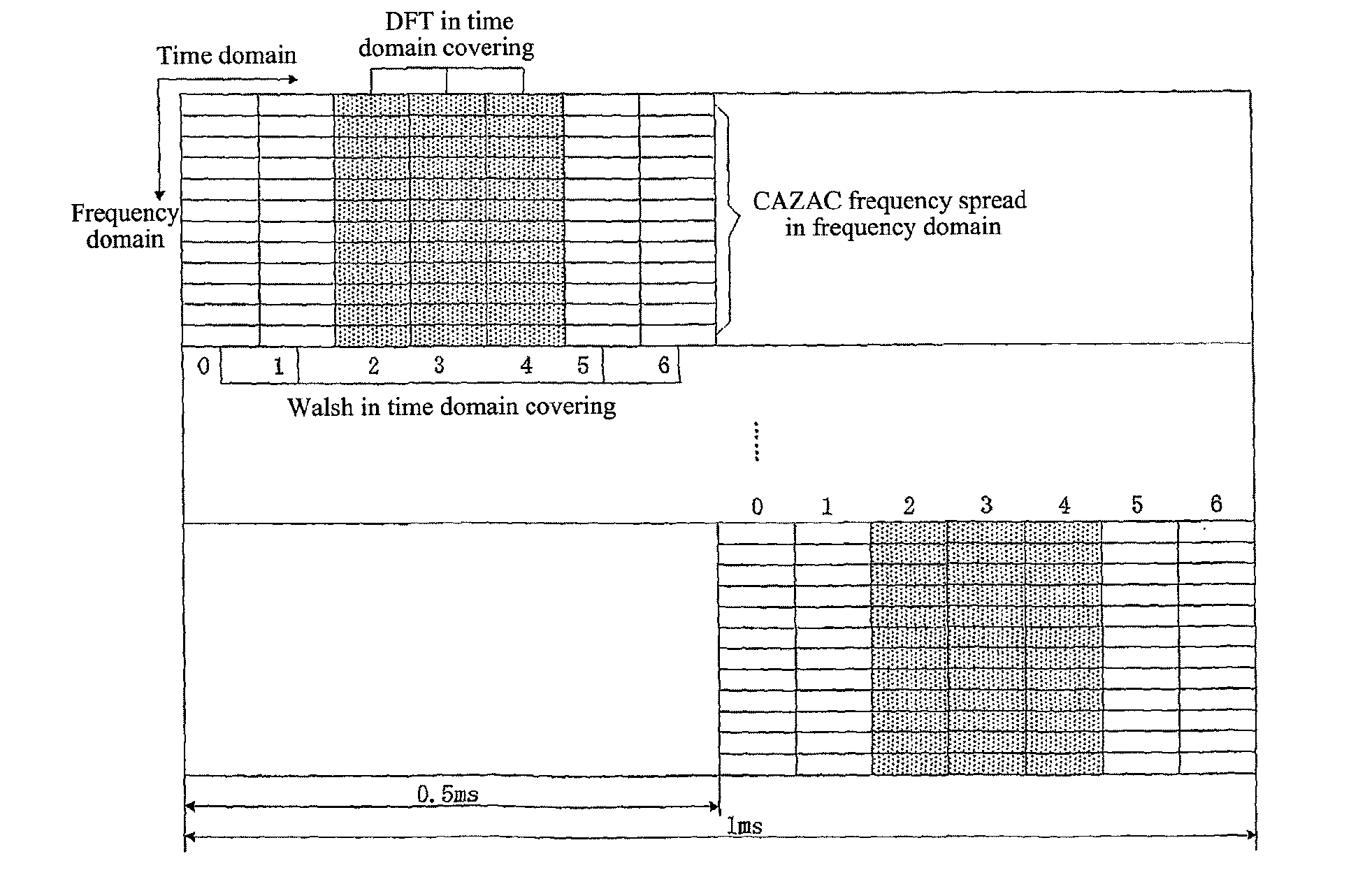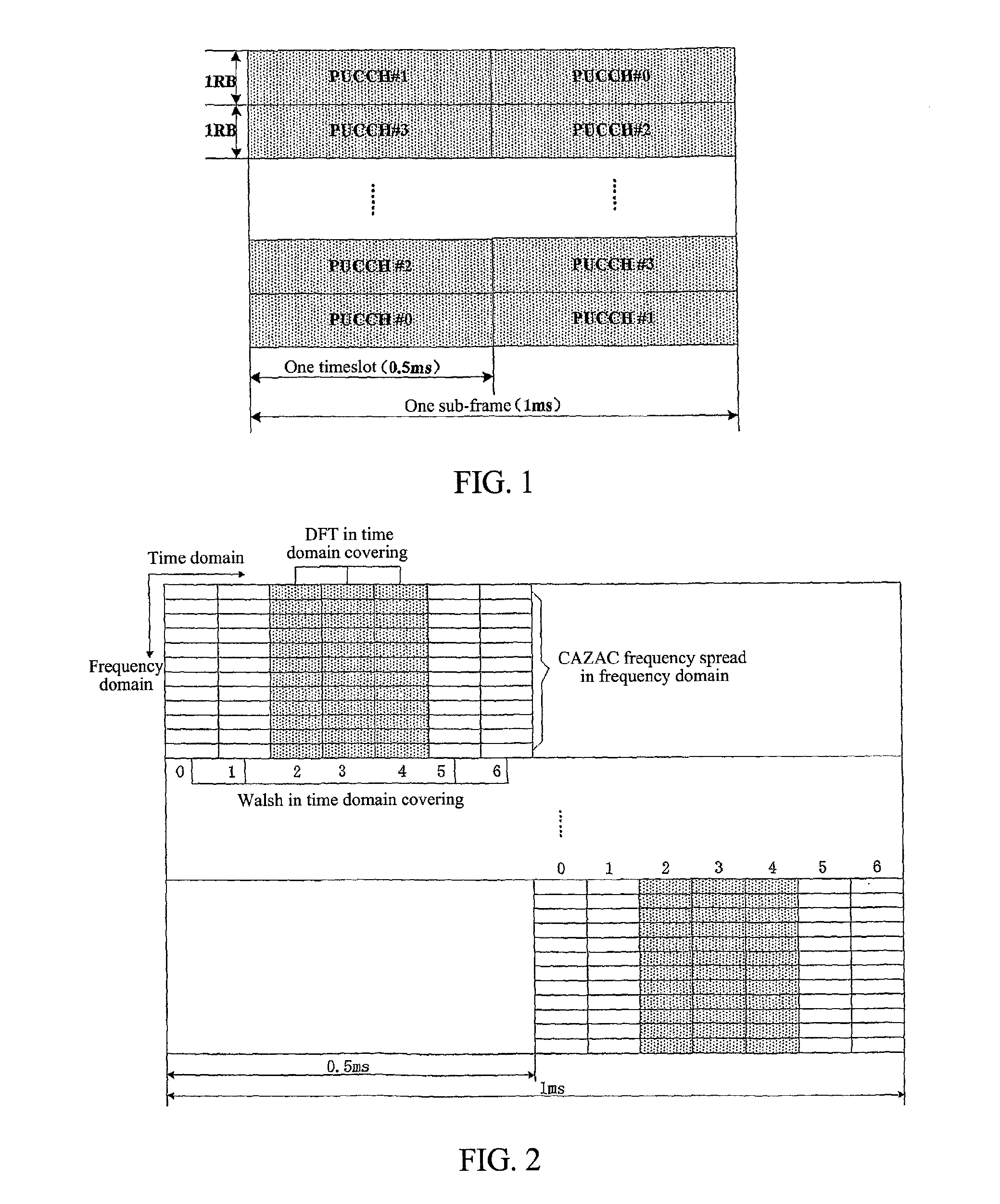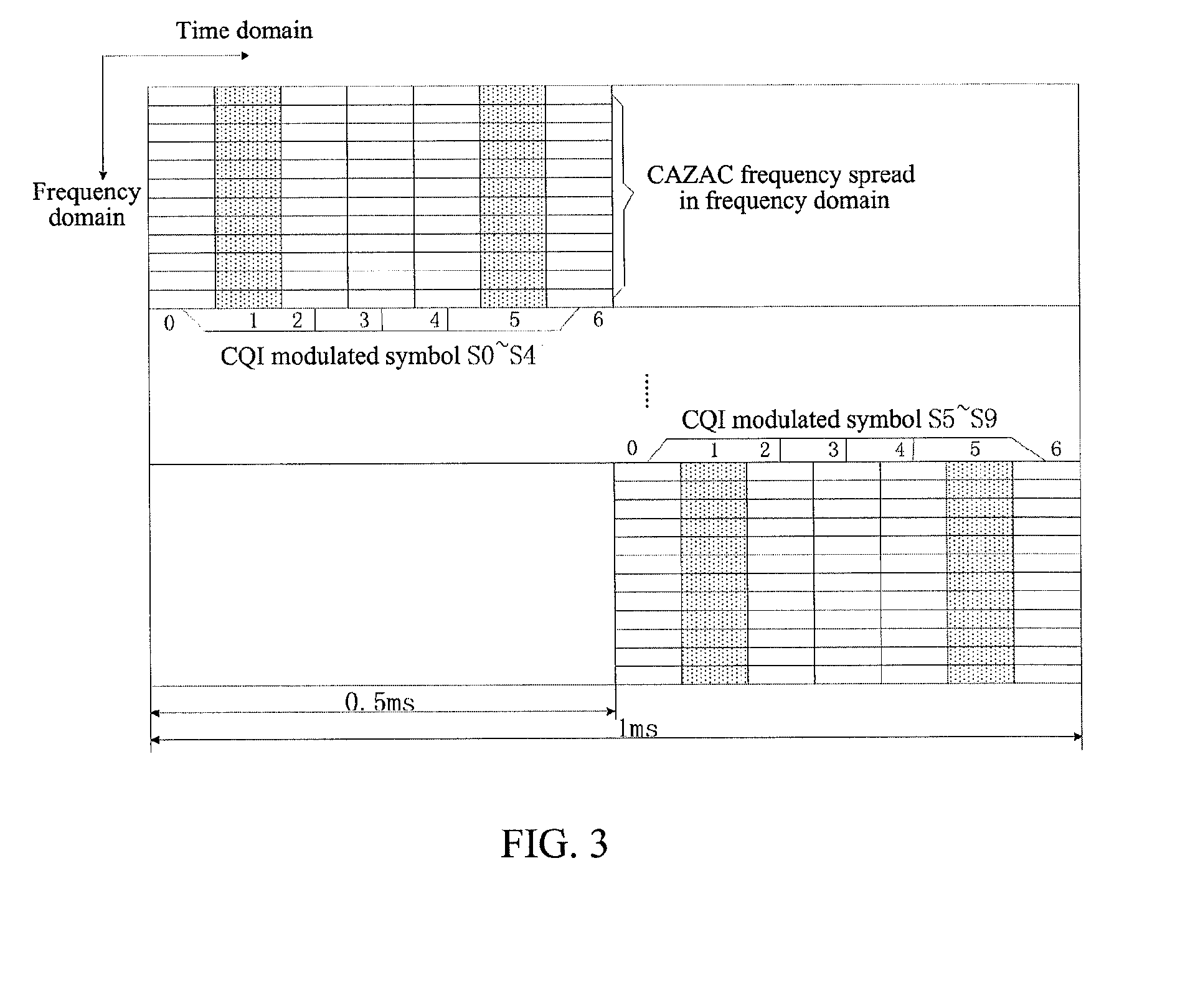Method for interference randomization of physical uplink control channel
a control channel and uplink technology, applied in the field of wireless communication, can solve the problems of damage to the orthogonality of the cazac sequence in frequency domain, interference of the control channel of the ues in the cell with each other, and poor orthogonality, so as to improve the receipt performance of pucch and simplify the implementation
- Summary
- Abstract
- Description
- Claims
- Application Information
AI Technical Summary
Benefits of technology
Problems solved by technology
Method used
Image
Examples
first embodiment
[0082]In the first embodiment, as shown in FIG. 4, only the UEs sending ACK / NACK are multiplexed in one resource block, and the normal cyclic prefix is used in the PUCCH, the number of available OCs is 3, and in the same OC, the allowed cyclic shift interval ΔshiftPUCCH is 1, thus the number of UEs multiplexed to simultaneously send ACK / NACK in one resource block is N=c×NSCRB / ΔshiftPUCCH=3×12 / 1=36, UE selects the control channel CB1[i] in the first timeslot and thus CB2[g1(i, c, N)] in the second timeslot,
g(i,c,N)=g(i,3,36)=((i+1)×3)mod(36+1)−1;
[0083]For instance, UE1> uses the ACK / NACK control channel CB1[1] to send ACK / NACK information in the first timeslot, then:
g(1,3,36)=((1+1)*3)mod 37−1=5
[0084]Therefore, UE1> uses the ACK / NACK control channel CB2[5] to send ACK / NACK information in the second timeslot.
[0085]Also for instance, UE2> uses the ACK / NACK control channel CB1[2] to send ACK / NACK information in the first timeslot, then: g(2,3,36)=((2+1)*3)mod 37−1=8.
[0086]Therefore, UE2...
second embodiment
[0088]In the second embodiment, as shown in FIG. 5, only the UEs sending ACK / NACK are multiplexed in one resource block, and the normal cyclic prefix is used in the PUCCH, the number of available OCs is 3, and in the same OC, the allowed cyclic shift interval ΔshiftPUCCH is 2, thus the number of UEs multiplexed to simultaneously send ACK / NACK in one resource block is N=c×NSCRB / ΔshiftPUCCH=3×12 / 2=18, UE selects the control channel CB1[i] in the first timeslot and thus CB2[g1(i, c, N)] in the second timeslot,
g(i,c,N)=g(i,3,18)=((i+1)×3)mod(18+1)−1;
[0089]For instance, UE1> uses the ACK / NACK control channel CB2[5] to send ACK / NACK information in the second timeslot, and UE2> uses the ACK / NACK control channel CB2[8] to send ACK / NACK information in the second timeslot.
third embodiment
[0090]In the third embodiment, as shown in FIG. 6, only the UEs sending ACK / NACK are multiplexed in one resource block, and the normal cyclic prefix is used in the PUCCH, the number of available OCs c is 3, and in the same OC, the allowed cyclic shift interval is ΔshiftPUCCH=3, thus the number of UEs multiplexed to simultaneously send ACK / NACK in one resource block is N=c×NSCRB / ΔshiftPUCCH==3×12 / 3=12, UE selects the control channel CB1[i] in the first timeslot and thus CB2[g1(i, c, A)] in the second timeslot,
g(i,c,N)=g(i,3,12)=((i+1)×3)mod(12+1)−1;
[0091]For instance, UE1> uses the ACK / NACK control channel CB2[5] to send ACK / NACK information in the second timeslot, and UE2> uses the ACK / NACK control channel CB2[8] to send ACK / NACK information in the second timeslot.
PUM
 Login to View More
Login to View More Abstract
Description
Claims
Application Information
 Login to View More
Login to View More - R&D
- Intellectual Property
- Life Sciences
- Materials
- Tech Scout
- Unparalleled Data Quality
- Higher Quality Content
- 60% Fewer Hallucinations
Browse by: Latest US Patents, China's latest patents, Technical Efficacy Thesaurus, Application Domain, Technology Topic, Popular Technical Reports.
© 2025 PatSnap. All rights reserved.Legal|Privacy policy|Modern Slavery Act Transparency Statement|Sitemap|About US| Contact US: help@patsnap.com



